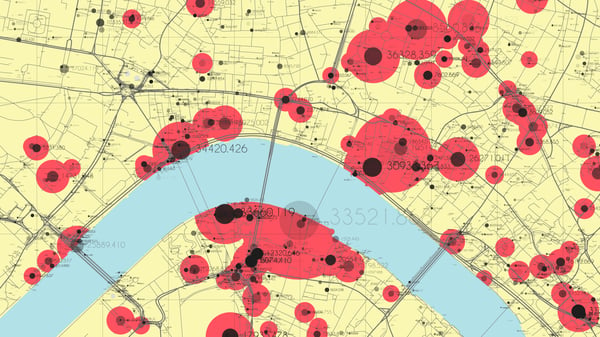4 Must-have Data Points for Dispatch-Billing Alignment and Maximum Reimbursement
12 Expenses to Consider When Calculating the Cost of an Ambulance Crash
Reimbursements continue to be challenging in EMS, and the future unfortunately doesn’t paint a favorable outlook any time soon
Was this information valuable?

Reimbursements continue to be challenging in EMS, and the future unfortunately doesn’t paint a favorable outlook any time soon. While sound billing practices and excellent provider documentation help prevent leaving money on the table, out of control expenses can erase any revenue advances quickly, which puts a strain on net income (profit) margins. One widely overlooked area of expenses is the true cost of a loss.
A $60B Loss
Motor vehicle crashes cost employers $60 billion annually in medical care, legal expenses, property damage, and lost productivity. They drive up the cost of benefits such as workers’ compensation, Social Security, and private health and disability insurance. In addition, they increase the company overhead involved in administering these programs. The average crash costs an employer $17,500. On-the-job crashes that results in an injury cost an employer is $74,000. Costs can exceed $500,000 when a fatality is involved.
What is the best way to manage these issues? Controlling costs is much more realistic than trying to increase revenue. Most EMS providers estimate revenue by run volumes, which are mostly static with slight variations in growth. New ambulance runs can’t be added unless you secure new contracts for service.
The True Cost of an Ambulance Crash
In order to help control costs, EMS providers should be well prepared for the financial implications of a vehicle crash. Operators need to know all the costs associated with a crash and make changes to prevent them from happening.
Take these 12 expenses into account when calculating vehicle crash losses:
- Increase of insurance premiums/deductibles. Most vehicle crashes lead to insurance companies increasing your premiums and deductibles. Don't overlook this potential increase in your budget.
- Damage to equipment other than the vehicle. Be sure to take into account expensive medical equipment being transported such as cots, monitors and laptops that can be damaged during a crash.
- Overtime to replace injured employee(s). As an agency, you'll have to compensate crews who cover shifts for the injured coworkers.
- Expenses to hire and train replacement employee(s). If existing staff is already at full capacity, leadership will have to hire/train new employees; additionally, expenses will be incurred if injured staff is on permanent or long-term disability.
- Legal expenses. If it's possible your agency is responsible for the crash and the accident involves additional vehicles, budget for legal expenses such as attorney and court fees.
- Settlement(s) liability. Depending on the court/judge ruling, you may encounter court or out-of-court expenses.
- Replacement of vehicle and equipment.
- Lost employee time/management time. Plan ahead for any time crew may have to take off because of injury or administration duties.
- Expenses to replace (rent – lease) another vehicle and or equipment. During repair of damaged vehicle and/or equipment, agencies may have to rent or lease in the interim.
- Reduced resale value of repaired vehicle. Unfortunately, any vehicle that is involved in a crash has a record/blemish that can greatly reduce its resale or trade-in value.
- Increase in workers’ compensation insurance. Workers' compensation includes wage replacement and medical benefits to employees injured in the course of employment. Plan on an insurance hike.
- Negative impact in community and contractual relations. Any crash, even a minor one, can turn into a news story and potentially damage your image throughout the community. Be sure you understand your contractual obligations so your business partner relationships aren’t negatively impacted.
ROI of Safety Measures
Performing a cost/benefit analysis of the safety measures is also a good idea. With raw numbers as proof of positive results, managers and employees alike are more likely to commit themselves to realizing a fleet vehicle safety culture. A return on investment (ROI) analysis can be calculated by determining the company's accident rate prior to implementing the fleet vehicle safety measures. In addition, knowing the true cost of a loss is compelling; because the expenses from a vehicle crash, depending on the severity, can take a net income to a loss overnight.
Related Posts
How EMS Agencies Can Reframe Need and Refocus Resources With Geospatial Analytics
How To Minimize Radio Chatter and Reduce Guesswork With Smarter Dispatch Resource Management
ZOLL Pulse Blog
Subscribe to our blog and receive quality content that makes your job as an EMS & fire, hospital, or AR professional easier.
ZOLL Pulse Blog
Subscribe to our blog and receive quality content that makes your job as an EMS, fire, hospital, or AR professional easier.





